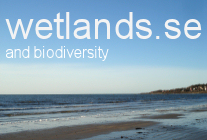
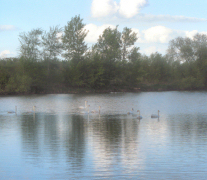
 |
|
 |
|
|
|
|
||
| Constructed wetlands | |
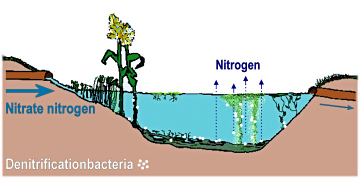 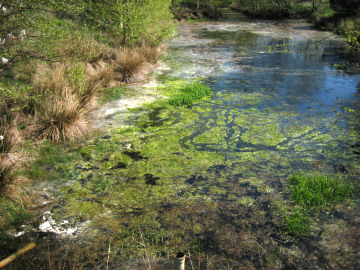 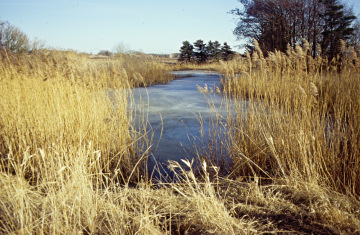 |
All wetlands are more or less multi-functional, even if they are specifically
designed for a particular type of main function. Creating wetlands is a
rewarding task as there are many opportunities to create win-win
situations for the society, outdoor life and land owner. The biggest
winner, however, is nature, which get a little back from what we
previously removed and destroyed. Nutrient traps and Storm water ponds. Wetlands can be used to purify water from the nutrients nitrogen and phosphorus, which otherwise follow the water courses into lakes and oceans, and there can lead to eutrophication. Rural areas and agriculture in northern latitudes need to quickly remove excess water. This water can be caught in wetlands and retained a little while. Meanwhile, the denitrifying bacteria convert the hazardous nitrate to harmless atmospheric nitrogen. Phosphorus settles to the bottom, since it mostly particle-bound. Water plants can slow down the speed, but can also take up a small part of the industry. Their main function begins, however, after they died and decomposed. Then the bacteria can exploit the plant remains as its energy source. Good nutrition traps must be designed so that a rich flora can establish themselves along the beaches and in the water. The design should provide the conditions to be able to maintain a reasonable volume in relation to the inflow and the inlet and outlet should be as far as possible from each other. In the flow direction transverse shallow areas, plants can establish themselves and slow down and filter the water as it passes through the wetland. |
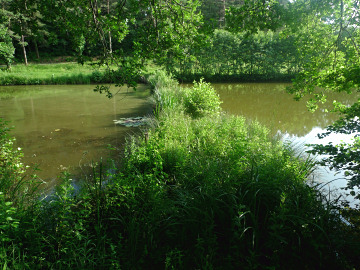 |
In recent years there have been proposals for improved nutrient
retention wetlands with specially designed ditches, infiltration zones,
overland flow and shallow systems. Common for these is that they seek to
optimize retention efficiency and find new alternatives that do not
require as much surface space as our traditional wetlands between 0, 5
and 5 ha. 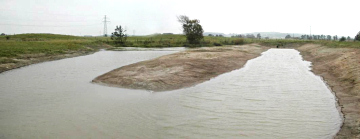 |
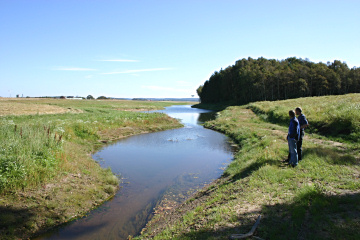 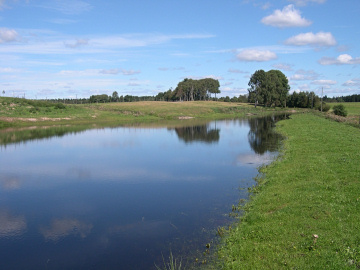 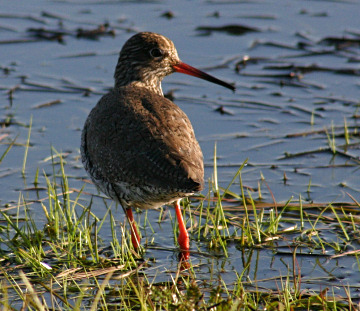 |
Bird Wetlands and ponds for amphibians It is mainly in the agricultural plains that many lakes have been lowered or completely drained to get new productive arable land. Even small pools of water are often drained away. It is mainly the water birds and amphibians that have suffered by the large-scale reclamation era, which has lasted since over a hundred years ago. A good bird wetland is shallow, so wading birds, ducks, geese and swans can access food from the water. If there are enough plants there will also be huge amounts of insects in the water that is the basis of water bird’s protein supply. Shallow water is also warmer and therefore may have a higher biological activity than deep colder water. They get warm early in spring which is important for many amphibians. A possible early egg lying prolongs larval potential development. Good food supply and a long first year provides strong juveniles and improves their chances to survive the winter. Vegetation overgrowth is a constant threat in the shallow bird wetland. Large and recurring water level changes combined with grazing and mowing of the vegetation after the breeding season are especially important. Islands can be burned during winter, which attracts the breeding species that want open views to spot. Nearby trees are considered by most water birds as a great risk and reduces breeding success, since predatory birds can perch there and detect eggs and chicks to take them in an unguarded moment. Bird wetlands require more consideration and care than other types of wetlands. Overgrowth of frog ponds can be counteracted by allowing them to dry out completely in late summer. The most important factor for good bird lakes and frog ponds is that they have the potential to become drained. It is the only way to get rid of the fish, which always enter into the newly-established wetlands, f.ex. as eggs (spawn) stuck to the duck’s plumage. When the fish have established it increases quickly and consume all available food to the point that nothing is left for the birds. The fish also eat amphibians' eggs and larvae, which can be devastating for local populations. Many nice constructed wetlands have had exceptionally good first years with many animal species that quickly adopted to the new habitat. After some years the birds often disappeared as quickly as they came. Due to the fish. |
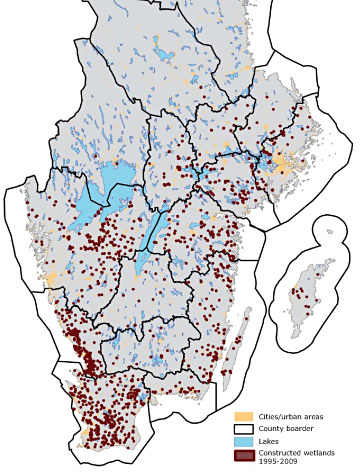 I Sverige har fram till 2009 anlagts ??? ha våtmarker. År 2015 låg siffran på ca ???? ha. |
Many other features Constructed wetlands can be used for irrigation or flood irrigation of lands to increase agricultural production. When there is hunting interest wetlands can be constructed along a forest edge. Ponds have been used for hundreds of years for cultivation of fish or crayfish. The classic starting point has been the economic considerations, i.e. wetlands should yield a profit. For all these special wetlands we can today with small means add features that benefit nature but also visitors who want to enjoy the wetland. This is another type of ecosystem services. We have realized that what is good for nature is good for us and that everything cannot be valued in money. A boat trip on the water, a barbecue on the beach, ice-skating in winter, meeting with elk or deer drinking in the wetland and the abundant bird life are examples of what wetland owners have discovered and made constructed wetlands so immensely popular. Without modern legislation, no new wetlands Many countries have very tough laws on changes in the landscape, especially everything related to open water. Very few countries balance this conservative approach with exceptions that allow positive changes in the landscape, such as the construction of wetlands. |
|
|
|
| © Peter Feuerbach |